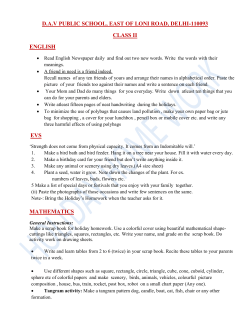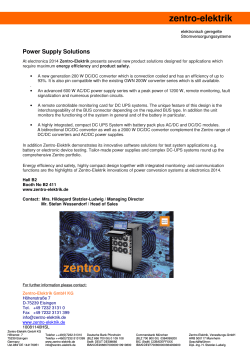
PDF - Millennium Steel
The Jet Process – an innovative solution to maximise scrap and HBI rates in converter steelmaking Fluctuating prices of scrap and direct-reduced hot-briquetted iron (HBI) in recent years – along with growing pressure from public authorities to further reduce their CO2 footprint – has heightened the interest of integrated steel producers in increasing the amount of scrap and HBI/ DRI used in converter steelmaking. The new Jet Process by Primetals Technologies is a highly efficient technological development that allows the portion of solid materials charged into the converter to be dramatically increased. Authors: Dr Gerald Wimmer, Krzysztof Pastucha and Dr Erich Wimmer Primetals Technologies Austria GmbH H ot metal, scrap and HBI/DRI are the three primary iron sources used in steelmaking. The inherent energy of the hot metal and the heat released during oxygen blowing, make it possible to charge up to approximately 20% of solid materials in steelmaking converters. If post-combustion techniques are applied, this rate can be increased to around 30%. For a higher scrap charging rate, additional energy for melting and heating is required. This extra energy can be provided by electrical power or by taking advantage of the chemical energy of coal. The generation and use of electricity, however, normally incurs considerable energy conversion losses and relatively high costs. The Jet Process was therefore developed to use the chemical energy of coal in a highly efficient manner to enable higher portions of scrap/HBI to be used directly in converter steelmaking. MILLENNIUM STEEL 2015 PROCESS EQUIPMENT AND DESCRIPTION 60 r Fig 1 Equipment arrangement of the Jet Process The centerpiece of this process is a converter equipped with bottom blowing tuyeres for the injection of oxygen, coal and lime and a hot blast lance system positioned above the converter mouth for post-combustion purposes. Figure 1 depicts the main equipment items and Figure 2 the arrangement of tuyeres and piping in the bottom of the converter. The coal injected into the hot metal, in addition to the carbon already in solution, are combusted in two steps: combustion of C to CO in the bath, and post-combustion of CO to CO2 above the bath by a hot blast. Two-thirds of the chemical energy stored in the coal is released in the second step of this combustion process, hence it is essential to ensure good post-combustion and an efficient transfer of the generated heat to the hot metal bath. This is made possible by air heated to approximately 1,300°C STEELMAKING AND CASTING in a pebble heater, enriched with oxygen up to 30% and blown at near-sonic speed onto the bath surface. A high impulse is needed to ensure good mixing and is generated by the high volume blown into the converter. If oxygen alone were blown, the total volume and total impulse would be much lower. As a result of this velocity, volume and momentum of the jet blast, a significant portion of the surrounding gases with their huge heat content are conveyed to the bath surface. This leads to a high input of heat into the liquid metal, intensive bath mixing and extremely efficient process reactions. An excellent utilisation rate of the chemical energy contained in the coal is thus achieved, typically in excess of 50%. This figure is in contrast to the 36% achieved in electric steelmaking due to the large energy losses that occur during electrical power generation. Oxygen for decarburisation of the hot metal is blown via tuyeres through the converter bottom into the bath. These tuyeres act like flame cutters, and large pieces of scrap can be melted quickly and efficiently. This also intensively mixes the bath, hence, all reactions are accelerated and rapidly reach equilibrium. The bottom of the converter looks like a standard oxygen bottom blown (OBM) converter; the only difference is that coal can also be injected. Furthermore, bottom blowing reduces the percentage of iron and iron oxide lost with the slag, and the tendency for slopping is decreased compared to standard top-blown converters. Lime powder blown through tuyeres accelerates desulphurisation and slag formation, and a smaller slag volume is generated resulting in increased productivity and process yield. Typically, yield is 1-2% higher than in a standard BOF converter operation. r Fig 2 Converter bottom with tuyeres for oxygen, coal and lime injection PROCESS FLEXIBILITY r Fig 3 Charging scrap be operated as a typical BOF converter, should this be required for any reason. AREAS OF APPLICATION There are a number of economically attractive market opportunities for the Jet Process. For example: ` Hot metal : scrap ratio can be adjusted to reflect the a MILLENNIUM STEEL 2015 The Jet Process is easily adapted to different scrap or HBI rates by adjusting the amount of coal injected and, theoretically, solid charge rates from 0% to 100% are possible. With up to 30% scrap charge, no coal injection is required because the heat contained in the hot blast combined with CO post-combustion provides enough energy. For scrap rates close to 100%, stepwise or continuous charging in combination with hot heel operation is necessary. Up to 50-60% scrap is charged in two loads at the beginning of the process (see Figure 3). For higher scrap rates not all scrap can be charged at the beginning so the process has to be stopped to add additional scrap. Depending on the scrap available and scrap handling practice, continuous charging might be beneficial. To further increase operational flexibility, a modular converter design has been developed that allows a conventional converter bottom and an oxygen blowing lance to be quickly installed so that the converter can 61 STEELMAKING AND CASTING CONCLUDING REMARKS variable costs of raw materials. ` Reduced hot metal availability resulting from a blast furnace blow down, a furnace standstill for revamping purposes. ` The need to increase total steelmaking output if converter plant capacity is not a constraining factor. In such cases the only investment necessary is to adapt existing converters to the Jet Process, which is far less expensive than installing added hot metal capacity and the associated coking and sintering plant expansions. ` It can contribute to a notable reduction in CO2 emissions. In a typical integrated plant, huge amounts of CO2 are generated during hot metal production. Replacing a portion of the hot metal with scrap considerably reduces CO2 emissions per tonne of steel. Compared to standard BOF operations, about 30% of CO2 can be saved if the scrap rate is increased to 50% by the application of Jet Technology, even though carbon is used in the Jet Process as the energy source. Plant operators can thus reduce CO2 emissions or increase production while keeping CO2 emissions constant. The Jet Process is ideally suited for medium to high (2060%) scrap/HBI rates. Below 20%, standard BOF is better, and above 60%, EAF may be better (depending on price and availability of electrical energy) in converters of any size. It represents an attractive upgrading option for producers to flexibly respond to varying prices for hot metal, scrap and HBI. Converters equipped with this solution thus close the gap between conventional BOF plants and electric arc furnaces. As demonstrated at the steelworks (100t converter) of one of the world’s largest producers, the Jet Process is very reliable and economically promising. Up to 50% of scrap has been processed successfully. MS Dr Gerald Wimmer is Head of Technology, Converter Steelmaking, Krzysztof Pastucha is an expert in stainless and special steelmaking and Dr Erich Wimmer is an expert in fluid simulations, all at Primetals Technologies Austria GmbH, Linz, Austria. CONTACT: rainer.schulze@primetals.com For a Clean Future. BLOOM ENGINEERING. 1610 CYCLOPS™ ULTRA4 LOW NOx™ BURNER ® KA-Weld PHOSLITE LW 1450 PIPE SKID INSULATION FLARE SYSTEM/ FLARE STACK BURNER Industrial Burners and Accessories n uctio d e R t n • Cos Emission Reductio vin a S g 1150 ULTRA3 LOW NOx™ REGENERATIVE BURNER • y erg n E ULTRA3 LOW NOx™ SMALL CAPACITY REGENERATIVE BURNER 1500 ULTRA2 LOW NOx™ BURNER BLOOM ENGINEERING (EUROPA) GMBH Phone: info@bloomeng.de +49 (0) 211 500 91-0 www.bloomeng.de BLO_AZ_178x125 Millennium Steel_1 1 01.04.2014 18:03:07 Uhr
© Copyright 2025









